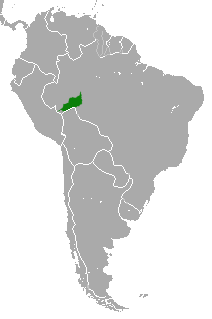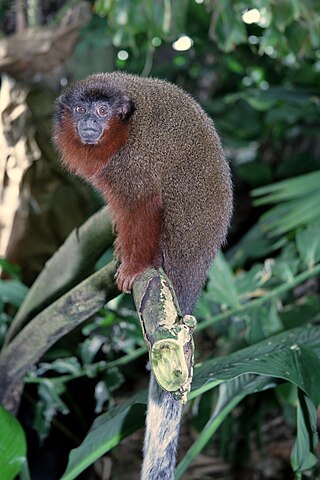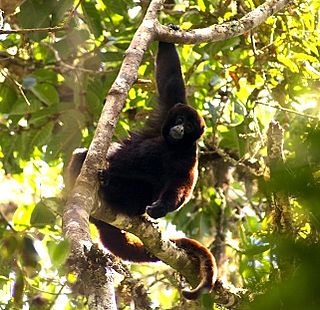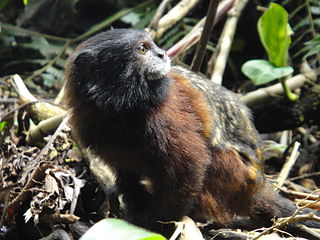
The macaques constitute a genus (Macaca) of gregarious Old World monkeys of the subfamily Cercopithecinae. The 23 species of macaques inhabit ranges throughout Asia, North Africa, and Europe. Macaques are principally frugivorous, although their diet also includes seeds, leaves, flowers, and tree bark. Some species such as the long-tailed macaque will supplement their diets with small amounts of meat from shellfish, insects, and small mammals. On average, a southern pig-tailed macaque in Malaysia eats about 70 large rats each year. All macaque social groups are arranged around dominant matriarchs.

The Rio Abiseo National Park is located in the San Martín department of Peru. UNESCO pronounced it as Natural and Cultural Heritage of Humanity in 1990. The park is home to many species of flora and fauna, as well as the location of over 30 pre-Columbian archaeological sites. Since 1986, the park has not been open to tourism due to the fragile nature of both the natural and archaeological environment.

The common woolly monkey, brown woolly monkey, or Humboldt's woolly monkey is a woolly monkey from Colombia, Ecuador, Peru, Bolivia, Brazil, and Venezuela. It lives in groups of two to 70 individuals, usually splitting the group into smaller subgroups when active.

Hershkovitz's titi monkey is a species of titi monkey, a type of New World monkey, from South America. It is found in Bolivia, Brazil, and Peru. The common name is in reference to American zoologist Philip Hershkovitz, who described the species as Callicebus dubius in 1988.

The brown titi monkey is a species of titi monkey, a type of New World monkey, from South America. It is endemic to Brazil. It was originally described as Callicebus brunneus in 1842 and transferred to the newly erected genus Plecturocebus in 2016.

The white-tailed titi monkey is a species of titi monkey, a type of New World monkey, from South America. It is found in Colombia, Ecuador, and Peru. It was described in 1848 as Callithrix discolor.

The gray woolly monkey or Geoffroy's woolly monkey is a subspecies of the common woolly monkey from South America. It is found in Bolivia, Brazil and Peru. L. l. cana gets its common name, gray woolly monkey, from its thick gray coat. Its hands, feet, face and the inside of the arms are dark in color. The gray woolly monkey has been considered endangered by IUCN since 2008. The subspecies is listed as endangered because it suffered a 50% decrease in population over the past 45 years due to deforestation and hunting.

The Peruvian spider monkey, also known as the black-faced black spider monkey, is a species of spider monkey that lives in Peru, as well as in Brazil and in Bolivia. At 60 centimetres long, they are relatively large among species of monkey, and their strong, prehensile tails can be up to 1 m (3 ft) long. Unlike many species of monkey, they have only a vestigial thumb, an adaptation which enables them to travel using brachiation. Peruvian spider monkeys live in groups of 20–30 individuals, but these groups are rarely all together simultaneously. The size and dynamics of the resulting subgroups vary with food availability and sociobehavioral activity. They prefer to eat fleshy fruit, but will change their diet in response to scarcity of ripe fruit. Individuals of this species also eat small animals, insects and leaves based on availability. Females separate from the band to give birth, typically in the fall. These females inhabit a group of core areas where resources are abundant in certain seasons. Typically, males exhibit ranging over longer distances than females, with movement of individuals enhancing the fluidity of subgroup size. Peruvian spider monkey are independent at about 10 months, with a lifespan of about 20 years.

Azara's night monkey, also known as the southern night monkey, is a night monkey species from South America. It is found in Argentina, Bolivia, Brazil, Peru and Paraguay. The species is monogamous, with the males providing a large amount of parental care. It is named after Spanish naturalist Félix de Azara. Although primarily nocturnal, some populations of Azara's night monkey are unique among night monkeys in being active both day and night. The species is listed as Least Concern on the IUCN Red List.

The Peruvian night monkey, also known as the Andean night monkey, is a nocturnal New World monkey endemic to northern Peru. Adults weigh around 1 kg (2.2 lb) and measure up to 50 cm (20 in) in length. Its colour is grey to light brown with characteristic black and white markings on the face. The chest, belly and upper arms are orange tinged, however, to a lesser extent then Aotus nigriceps.

The yellow-tailed woolly monkey is a New World monkey endemic to Peru. It is a rare primate species found only in the Peruvian Andes, in the departments of Amazonas and San Martin, as well as bordering areas of La Libertad, Huánuco, and Loreto.

The Juruá red howler is a species of howler monkey, native to Peru and Brazil.

The red-mantled saddle-back tamarin is a species of saddle-back tamarin, a type of small monkey from South America. The red-mantled saddle-back tamarin was formerly considered to be a subspecies of the brown-mantled tamarin, L. fuscicollis. It lives in Ecuador and Peru and its type locality is in Peru, near the confluence of the Amazon River and the Napo River.

The hairy saki is a species of saki monkey, a type of New World monkey. It is found in northern Peru, southern Colombia, and a small portion of northwestern Brazil.

The burnished saki is a species of saki monkey, a type of New World monkey. It is found in central Peru and a small portion of adjacent Brazil.
Isabel's saki is a species of saki monkey, a type of New World monkey. It is endemic to a small portion of northern Peru.
Rylands' bald-faced saki is a disputed species of saki monkey, a type of New World monkey. It is found in Bolivia, Peru, and Brazil.

Toppin's titi monkey is a species of titi monkey, a type of New World monkey, from Brazil, Peru, and Bolivia.

The Urubamba brown titi monkey is a species of titi monkey, a type of New World monkey, endemic to Peru.















